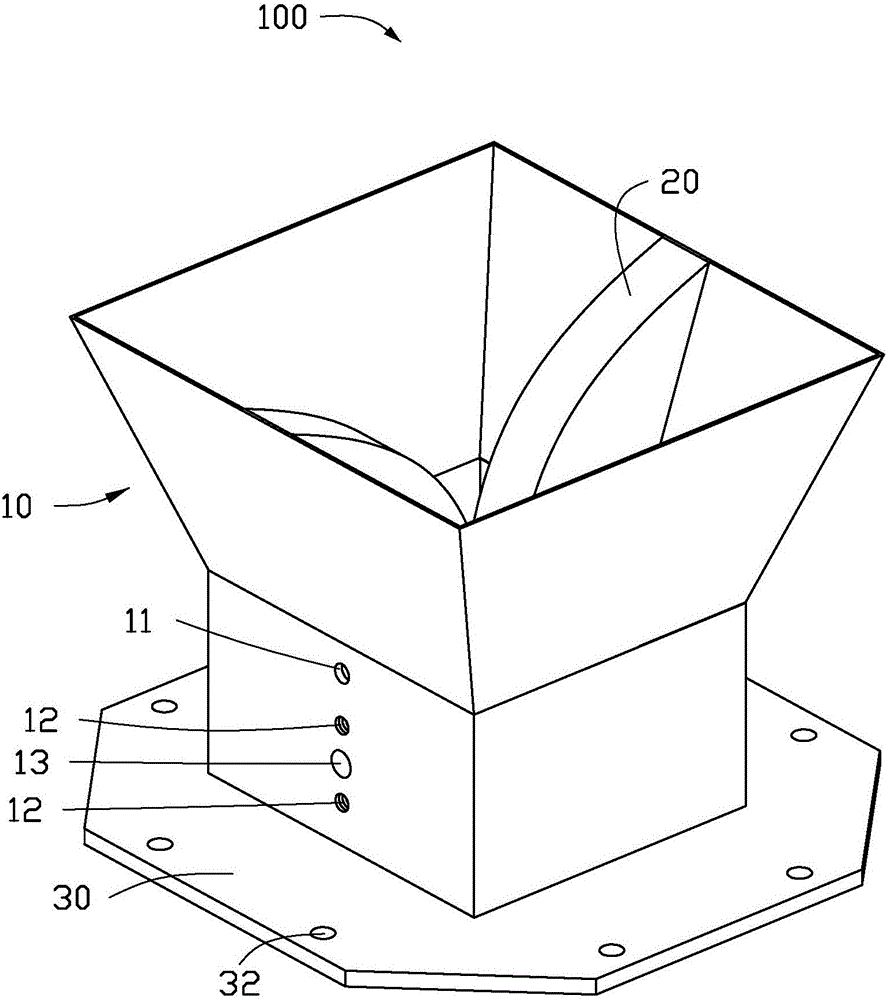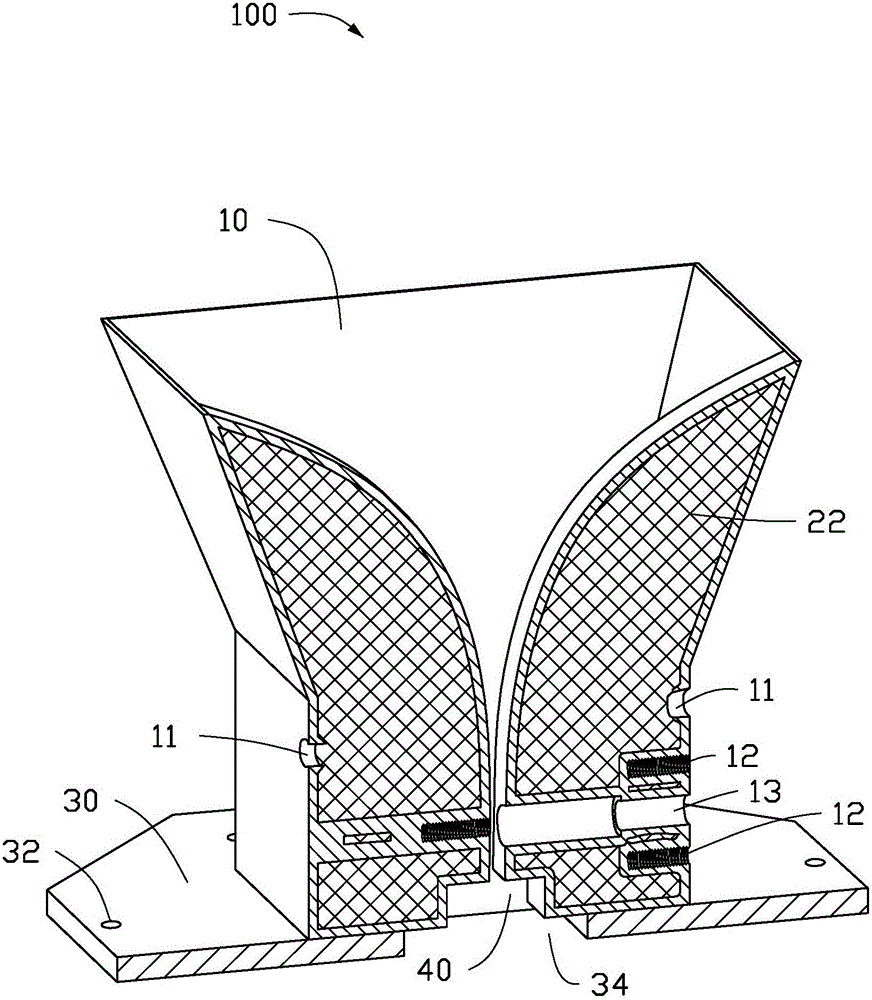Low-orbit positioning load aluminium alloy horn antenna and manufacturing method thereof
A horn antenna, aluminum alloy technology, applied in antennas, waveguide horns, electrical components, etc., can solve the problems of easy boiling and evaporation of Al elements, heavy weight of horn antennas, and large residual porosity, etc., to improve the molding density and antenna performance. , Antenna processing cycle and cost reduction, the effect of optimizing the molding process
- Summary
- Abstract
- Description
- Claims
- Application Information
AI Technical Summary
Problems solved by technology
Method used
Image
Examples
Embodiment Construction
[0055] The principles and features of the present invention are described below, and the examples are only used to explain the present invention, but not to limit the scope of the present invention.
[0056] See Figure 1 to Figure 3 , the embodiment of the present invention provides an additive manufacturing method for a horn antenna 100 facing a low-orbit positioning load, which includes the following steps:
[0057] Step 1), designing the horn antenna 100 according to the requirements of the additive manufacturing process, the antenna ridge 20 of the horn antenna 100 is a grid design, the bottom of the antenna resonant cavity 40 is an opening design, and the bottom of the antenna ridge 20 has a pillar design, and Design of the outer ridge 40 of the antenna;
[0058] Step 2), performing antenna additive manufacturing processing;
[0059] In step 3), post-processing is performed on the processed antenna to obtain a final usable antenna, and the post and the outer ridge 40 o...
PUM
| Property | Measurement | Unit |
|---|---|---|
| Diameter | aaaaa | aaaaa |
| Thickness | aaaaa | aaaaa |
Abstract
Description
Claims
Application Information
 Login to View More
Login to View More - R&D
- Intellectual Property
- Life Sciences
- Materials
- Tech Scout
- Unparalleled Data Quality
- Higher Quality Content
- 60% Fewer Hallucinations
Browse by: Latest US Patents, China's latest patents, Technical Efficacy Thesaurus, Application Domain, Technology Topic, Popular Technical Reports.
© 2025 PatSnap. All rights reserved.Legal|Privacy policy|Modern Slavery Act Transparency Statement|Sitemap|About US| Contact US: help@patsnap.com



